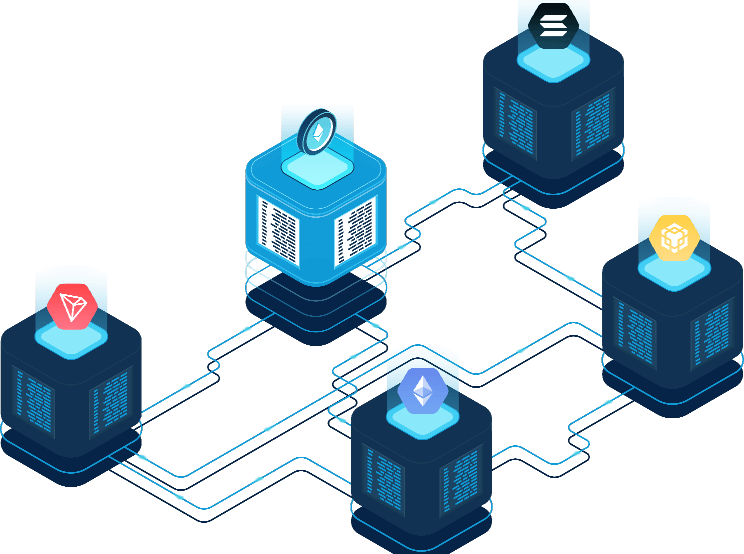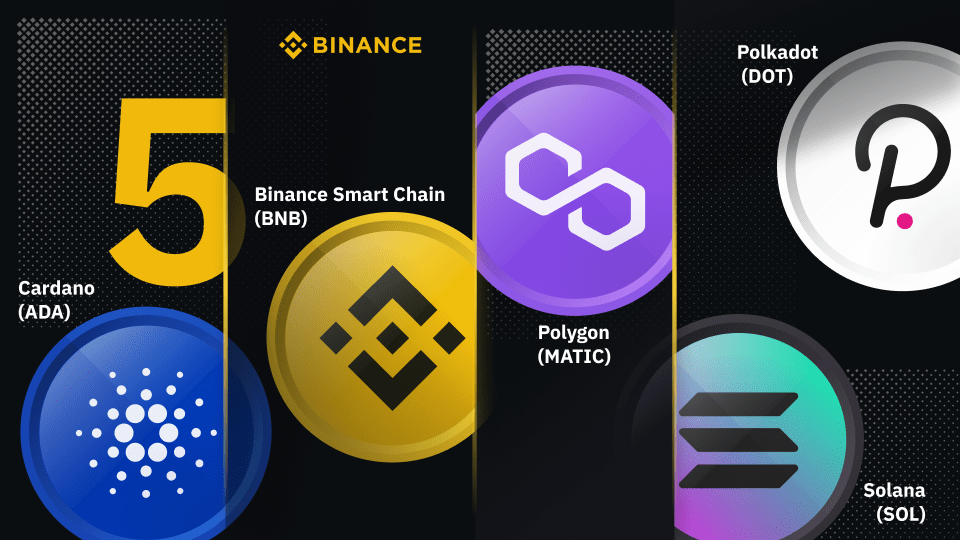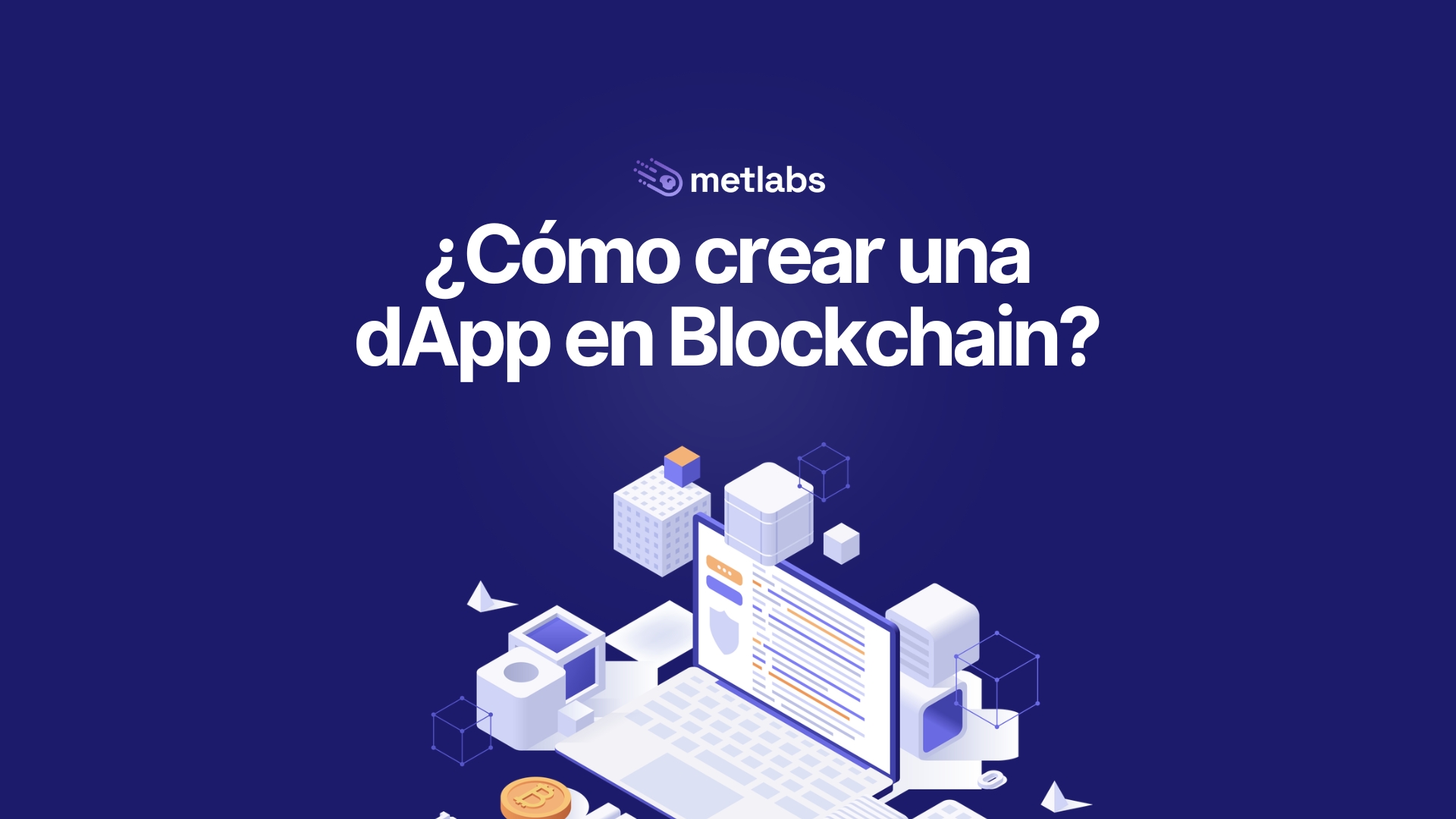Introduction:
Decentralized applications, or DApps, are changing the way we interact with technology. Developed on blockchain platforms, DApps offer a decentralized and transparent approach to various industries, from finance to gaming and social networks. In this guide, we will show you how to create your own DApp, step by step, and explore the fundamental concepts you need to understand.
Fundamental Concepts
Blockchain and its Role in DApps:
DApps are built on blockchain technology, a public and decentralized ledger that ensures data integrity. Each block of data is securely linked to the previous one, making the information immutable and tamper-proof.
- Blockchain Structure: At its core, the blockchain is a distributed digital ledger that stores information in a decentralized manner. Instead of relying on a central server, the blockchain runs on a network of nodes, ensuring higher security and resistance to manipulation. Each piece of data, known as a “block,” is linked to another chronologically, forming an immutable chain of information. This chain structure ensures that previous data cannot be modified without affecting all subsequent blocks. Consequently, information stored on the blockchain is resistant to alteration, ensuring data integrity.
- Transparency and Trust: One of the standout attributes of the blockchain is its transparency. Anyone can access information recorded on the blockchain in real-time. In the context of DApps, users can verify all transactions and actions performed on the application publicly. This creates a high level of trust, as there is no need to rely on intermediaries or third parties to validate operations. Transparency is also crucial for auditing and accountability.
- Security and Resistance: Security is a fundamental pillar of the blockchain. Decentralization and immutability ensure that stored data is highly resistant to manipulation. To alter a data block, an attacker would need to modify not only that block but also all subsequent blocks in the chain, making it practically impossible in well-established blockchain networks.
- Smart Contracts as the Engine of DApps: Smart contracts are autonomous programs that run on the blockchain and enable the automation of agreements and transactions without the need for intermediaries. These contracts are the main engine driving the functionality of many DApps. Smart contracts can contain programmable logic that dictates how transactions are conducted and how application rules are applied. By running on a decentralized network and being immutable, smart contracts bring a high degree of reliability and security to DApps.
- Impact on Decentralization: The combination of blockchain and smart contracts has paved the way for increased decentralization in various sectors. DApps can enable direct interaction without the need for intermediaries, empowering the creation of decentralized economic and social ecosystems.
Smart Contracts:
Smart contracts are one of the fundamental pillars enabling the existence and operation of decentralized applications (DApps) in blockchain technology. To fully comprehend their significance, it’s essential to delve into how they function and how they are applied in the DApps ecosystem.
- Autonomous Execution: Smart contracts are computer programs that run autonomously on a blockchain network. These programs are stored on the blockchain and are activated when certain predefined conditions are met. This means that smart contracts are self-sufficient and do not require the intervention of third parties or human intermediaries to function. This automation is crucial for the decentralization and efficiency of DApps.
- Programmable Logic: The logic of a smart contract is programmable and can be customized according to the needs of a specific DApp. Developers define the rules and conditions of the smart contract based on the purpose of the application. This includes conditions such as when transactions are executed, who can participate, and how funds are handled. The flexibility in programming these contracts allows for a wide range of applications, from decentralized financial systems (DeFi) to gaming and electronic voting.
- Trust and Transparency: Smart contracts are immutable once deployed on the blockchain, meaning they cannot be modified or halted without consensus from the network. This feature ensures reliability and transparency in operations. DApp users can be confident that the rules set in the smart contract will be consistently followed without the risk of fraud.
- Decentralized Execution: Smart contracts run on the blockchain network, meaning they do not depend on a central server or control entity. Each node on the network verifies and executes the smart contract independently, ensuring the distribution of trust. This is crucial for decentralization and eliminating intermediaries, as there is no need to trust a single entity.
- Transactions and Tokenization: Smart contracts often manage financial transactions and may involve cryptographic tokens. For example, a smart contract can be used to create and transfer tokens in a DApp. This enables the creation of decentralized financial systems and the exchange of digital assets securely and without the need for a traditional financial institution.

Planning
Goal Definition:
Before embarking on the exciting adventure of creating a DApp, it’s essential to have clear goals. Defining your goals will provide a clear focus and a solid roadmap for the development of your decentralized application. Here’s an elaboration on the importance of defining your goals:
- Type of DApp: First and foremost, you must determine the type of DApp you want to create. DApps can be of various types, such as financial, gaming, identity, governance, healthcare, among others. Each type has its unique characteristics and challenges, so you should choose based on your interest and expertise, as well as the target market you want to reach.
- Purpose: Once you have identified the type of DApp, it’s crucial to define its purpose. What specific problem or need does your DApp aim to solve? Identifying a clear purpose is essential for determining the value it will bring to users and how it will differentiate itself from other applications in the market. For example, a financial DApp could aim to facilitate efficient and affordable peer-to-peer loans.
- Problem to Solve: To thoroughly understand the purpose of your DApp, it’s necessary to identify the problem it will address. What is the need or deficiency in the current market that your DApp will tackle? Questions like these will help you define the problem accurately and design an effective solution. Following the previous example, the financial DApp could address the problem of lack of access to affordable credit for certain groups of people.
- Benefits and Value: Besides solving a problem, it’s important to consider the benefits your DApp will provide to users. How will it improve their lives or experiences? What added value will it offer? Identifying these benefits will help you effectively communicate the value of your DApp to potential users and investors.
- Target Audience: Define who your DApp is targeting. Who are the potential users? In which demographic segment are they located? Understanding your target audience will allow you to tailor the DApp to their needs and preferences.
Success Metrics: To assess the performance of your DApp, establish clear success metrics. How will you measure the achievement of your goals? For example, if your DApp is a
- Ethereum: Ethereum is one of the most popular and widely used blockchain platforms for DApp development. Its robust smart contract ecosystem and large developer community make it an attractive choice. However, Ethereum has faced challenges related to scalability and gas costs, so it’s important to consider these limitations.
- Binance Smart Chain: Binance Smart Chain is an Ethereum-compatible blockchain that has gained a large user base due to its speed and lower transaction costs. It’s a good option for DApps seeking an alternative to Ethereum without sacrificing smart contract compatibility.
- Solana: Solana is known for its high speed and scalability, making it suitable for DApps with high-performance requirements, such as games and transaction-intensive applications. Solana uses a unique consensus approach called Proof of History (PoH) to achieve its speed.
- Polkadot: Polkadot stands out for its interoperability, allowing DApps to interact with multiple blockchains. It’s an excellent choice for applications that need to leverage different blockchains or want to be part of a broader ecosystem.
- Costs: Evaluate the costs associated with the blockchain platform. Transaction fees (gas fees) can vary significantly between different blockchains, affecting your DApp’s profitability and user experience.
- Development Ecosystem: Consider the community and developer support. An active community and a broad set of development tools can be crucial for the success of your project.
- Security and Consensus: Examine the consensus mechanism used by the platform and its security track record. Security is a priority when it comes to DApps, as smart contracts contain financial value and must be resistant to vulnerabilities.
- Scalability: If you anticipate significant growth in the number of users or transactions, scalability is a key factor. Some platforms are better prepared than others to scale efficiently.

DApp Development
Step-by-Step Development:
When embarking on DApp development, it’s crucial to follow a clear and methodical process. Here’s a concise overview of key steps:
Choice of Programming Language:
Opt for a programming language suitable for smart contract development. If using Ethereum, Solidity is the most common choice due to its compatibility and support.
Smart Contract Development:
Create a smart contract defining the core logic of your DApp. This involves establishing rules, conditions, and functions that determine how your application will behave. Ensure thorough testing of the contract to avoid vulnerabilities.
User Interface (UI) Design:
For your DApp’s user interface, you can use modern technologies like React.js or Next.js for the front-end and Node.js for the back-end. These technologies are popular in web development and offer a wide range of tools and libraries to create engaging and functional user interfaces.
Front-End with React.js or Next.js:
React.js and Next.js are open-source libraries and frameworks for building interactive user interfaces. You can use React.js to construct reusable components and efficiently manage your DApp’s state. Next.js is an extension of React that simplifies the creation of fast and high-performance web applications.
Back-End with Node.js:
Node.js is a JavaScript runtime platform widely used in server and back-end application development. You can use Node.js to manage business logic, interact with the smart contract, and communicate with the blockchain.
Connecting to the Blockchain:
Utilize specific blockchain libraries and SDKs (e.g., Web3.js for Ethereum) to connect your DApp to the blockchain network. This allows you to interact with the smart contract and read/write data on the blockchain.
Testing and Optimization:
Conduct thorough testing at each development stage to ensure your DApp functions efficiently and error-free. As you progress, optimize the code and user interface to enhance the user experience.
Deployment on the Blockchain:
Once development and testing are complete, deploy your DApp on the blockchain of your choice. This involves spending a certain amount of cryptocurrency (usually ether on Ethereum) to secure a place on the blockchain.
Continuous Maintenance:
DApp development is an ongoing process. You’ll need to maintain and update your application to address security issues, improve performance, and add new features as the blockchain ecosystem evolves.
Promotion and User Acquisition:
Finally, promote your DApp to attract users and build a solid user base. Use marketing strategies, social media, and blockchain communities to increase your DApp’s visibility.
This step-by-step approach will help you develop an effective and appealing DApp. Ensure a balance between functionality, security, and user experience throughout the entire development process.








